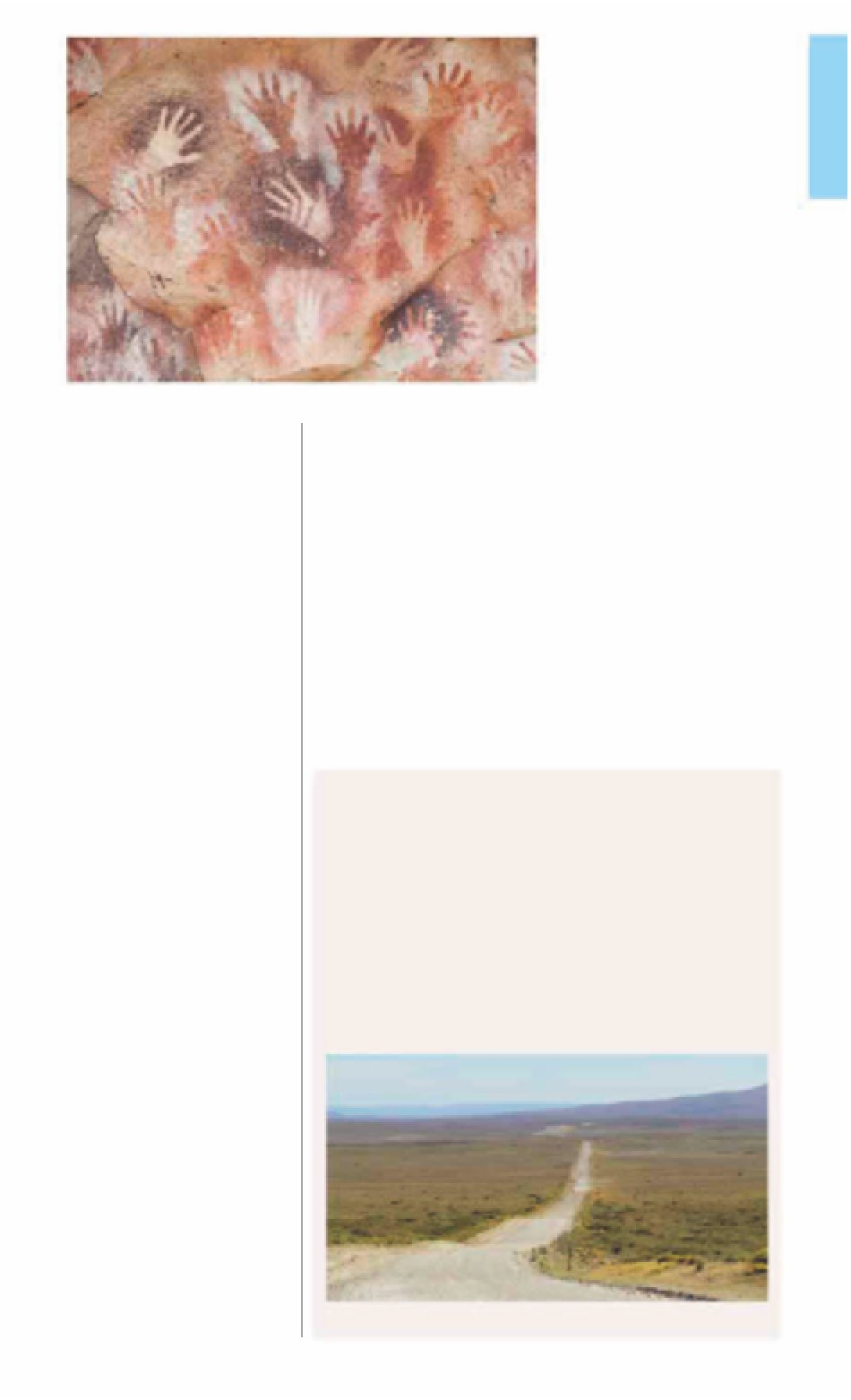Travel Reference
In-Depth Information
illustrate the link between the
hunters' earthly world and its
spirit equivalent. Paintings from
7,000 years ago show hundreds
of heavily pregnant guanacos
standing still. These are thought
to be some kind of painted
prayer, beseeching the return of
the animals during a period of
drought that had seen them
migrate to better pastures.
Stylized forms mark the
cave's most recent art, dating
from 1,500 to 4,000 years
ago. Biomorphic motifs of
frogs, lizards, hawks, and
pumas, and geometrical
shapes such as concentric
circles, zigzag lines, and
combined triangles adorn the
cave walls. These abstract forms
continue to confound experts.
Archaeological work at
Cueva de las Manos is ongoing,
so visitors get a chance to
marvel at the rock art on
guided tours only. Tour groups
leave the visitor center several
times daily. Tour agencies in
Perito Moreno run excursions to
the cave; visitors can also seek
lodging with Estancia Telken
or Estancia Cueva de las Manos
(see pp310-11)
, both of which
are conveniently located nearby.
The ancient stenciled handprints at Cueva de las Manos
,
Cueva de las
Manos
Road map
B5. Ruta Provincial 97,
100 miles (161 km) S of Perito Moreno.
Open
9am−7pm daily.
&
8
=
∑
cuevadelasmanos.org
and even urine. Once in liquid
form the paint would be spat
out over the hand on the wall.
The hunters' intimate
relationship with nature is
depicted in the early paint-
ings; the hunting scenes are
of great anecdotal value,
showing guanacos being
chased across the canyon,
surrounded, and then killed
with long spears and stones.
The sense of movement is
striking, with both energetic
hunter and prey depicted in
dynamic form. Other paintings
Hidden deep within the Río
Pinturas Canyon, inside the
borders of breathtaking Parque
Nacional Perito Moreno, Cueva
de las Manos (Cave of Hands) is
Argentina's finest example of
prehistoric cave art. Declared a
UNESCO World Heritage Site in
1999, it has dumbfounded
experts since its discovery in
1881 and still hosts ongoing
archaeo logical work.
The main cave measures
79 ft (24 m) in depth, with an
entrance 49 ft (15 m) wide and
an initial height of 33 ft (10 m).
The ground inside the cave,
however, has an upward slope
and soon the height is reduced
to no more than 7 ft (2 m).
A visit to the cave, where the
rock paintings date from as far
back as 9,500 years ago, is a
moving experience. Vivid,
kaleidoscopic, stenciled hand
negatives, left by children and
adults, are spread throughout
the 1,968-ft (600-m) long trail.
Numbering more than 2,000,
they are thought to be evidence
of the artists' belief in the
permanent contact between
man and mother earth. The
paint used in the negatives
would have been mixed orally,
using mineral pigments found
at the site combined with
anything from water to saliva
Argentina's Loneliest Road
No road in Argentina inspires solitude and introspection quite like
Ruta Nacional 40. Never winding and seemingly never ending, Ruta
Nacional 40 runs the entire length of Argentina, but finds its true
heart in the wilderness of Patagonia; and nowhere more so than in
the 390-mile (628-km) stretch of nothingness that lies between
Perito Moreno and El Calafate. Here, Ruta Nacional 40 becomes a
rocky, gravel artery, surrounded by a featureless landscape of scrub
grass and broad horizons. A howling wind is the traveler's only
accompaniment; encounters are few and far between, this being a
region of isolated, century-old sheep estancias and forgotten villages.
Left behind by time, they evoke the spirit of a Patagonia of old.
An empty, lonely stretch along Ruta Nacional 40


































